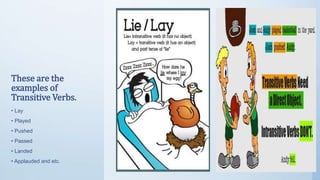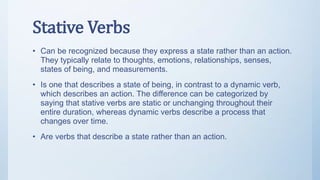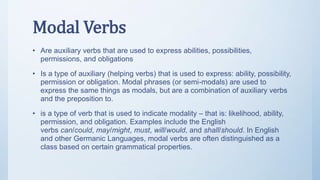The document is an extensive guide on verbs, categorizing them into various types such as action, transitive, intransitive, auxiliary, stative, modal, phrasal, and irregular verbs. Each category is defined with examples, explaining their grammatical functions and unique characteristics. Additionally, the document includes a short exercise to reinforce understanding of the concepts presented.





















